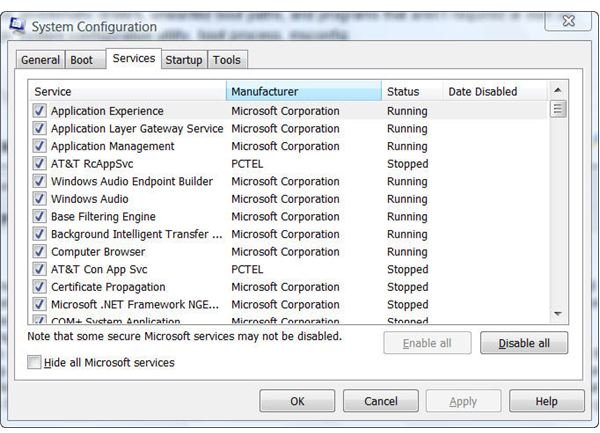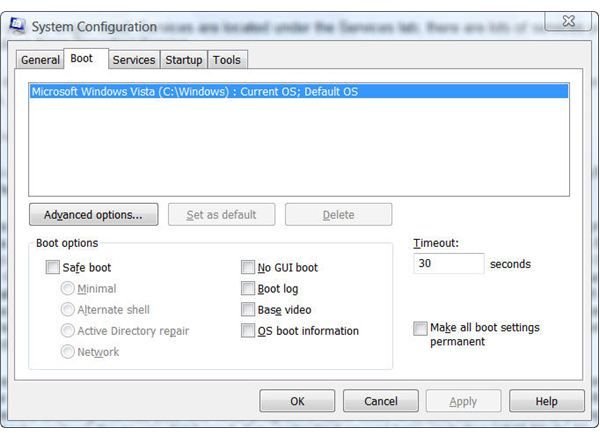Cleanup the Windows Boot Process Using the System Configuration Utility in XP & Vista
System Configuration Utility
Generally, the System Configuration Utility is used as a diagnostic tool to uncover and repair boot problems. This utility allows you to check and uncheck items like drivers, services, and startup programs and to see which other items are the culprit for a particular problem you are having. You can also use the utility to enhance the boot process, by performing the following tasks:
• Remove unwanted boot paths: When your system boots, Windows will search specified directories (boot paths) to look for files that it might need. Over time, various boot paths might get set up that you no longer need. These unnecessary boot paths can be acquired when Windows is reinstalled, if a reinstallation fails, or if you copy or delete partitions. The fewer places that Windows needs to search when it boots, the better.
• Remove programs that aren’t required at boot-up: These are located under the Startup tab. You can learn more about that in my article: Clean Up Your PC: Shorten Boot Time Part I.
• Remove services you no longer need: Services are located under the Services tab; there are lots of services you may not need, like the Windows Error Reporting Service.
To perform one or more of these tasks, open the System Configuration Utility by typing msconfig.exe in the Run dialog box. Then verify, check, delete, and uncheck the following items as they pertain to your system and needs:
Note: I’ve included directions for XP and Vista here; that’s why there are two choices for many of the tasks.
1. From the Boot.ini or Boot tab, click Check All Boot Paths. If you see a boot path that is no longer needed, you’ll be prompted to remove it from the Boot.ini file. [See Image 1]
2. Click the Services tab and sort the services by clicking Essential or Manufacturer. Make sure that Hide All Microsoft Services is not checked. If a service is essential, you’ll see the word “Yes” in the Essential column or it will have a check by it. You’ll notice right off that many of the services aren’t essential, including Fast User Switching Compatibility, Help And Support, Messenger, Smart Card, Task Scheduler, and items that came preinstalled on your computer, like a Media Music Server or programs you installed yourself. If you decide that you never use Help And Support, Task Scheduler, and smart cards to log on, you can uncheck these items. Don’t uncheck anything that you don’t recognize or can’t find information about in the Help files though. For instance, don’t uncheck DNS Client, DHCP Client, or Internet Connection Firewall or your Internet adventures will be greatly affected. [See Image 2]
Tip: From the Services tab, you can view the services in one of two ways. To view all services, leave ‘Hide All Microsoft Services’ unchecked; to view only third-party services, check ‘Hide All Microsoft Services’. Many of these services are certainly not needed. Leave checked anything that has your anti-virus program’s name listed in it, and don’t uncheck anything you don’t recognize, but certainly uncheck things you don’t need. I’ve unchecked several here, including VAIO Media Music Server (Application), VAIO Media Music Server (HTTP), and VAIO Media Music Server (UpnP). We know we don’t need any of these things. Uncheck what you deem unnecessary (nothing essential) and reboot.
Images

Related Reading:
>» Windows XP: Tweak Effects, Processor Scheduling, and Memory Usage for Better PC Performance
>» Improve Windows Performance: Get Rid of Unsigned Files and Drivers
